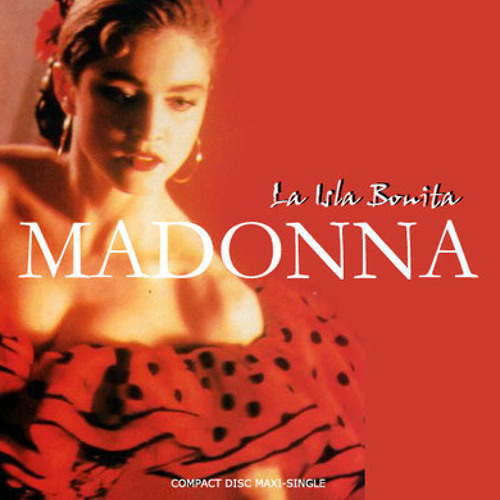Introduction:
“La Isla Bonita,” one of Madonna’s most iconic and enduring hits, stands as a testament to the Queen of Pop’s ability to transcend musical boundaries and create timeless masterpieces. Released in 1987 as part of her third studio album, “True Blue,” the song blends Latin influences with Madonna’s pop sensibilities, resulting in a mesmerizing track that has become a classic. This comprehensive song review delves into the intricacies of “La Isla Bonita,” exploring its cultural influences, musical elements, lyrical nuances, and enduring impact on the global music landscape.
I. Cultural Influences and Exotic Vibes:
“La Isla Bonita” opens with the sound of flamenco guitars, immediately transporting listeners to a world of tropical romance and exotic allure. Madonna, known for her innovative approach to blending diverse musical styles, drew inspiration from Latin and Spanish influences for this track. The use of flamenco guitars, castanets, and a distinctive Caribbean rhythm creates a lush sonic landscape, capturing the essence of a sun-soaked, passionate journey.
II. Madonna’s Vocal Performance:
Madonna’s vocal performance in “La Isla Bonita” showcases her versatility and ability to adapt to different genres. Her delivery is both sultry and expressive, perfectly complementing the song’s Latin-infused atmosphere. The vocals carry a sense of yearning, aligning with the theme of a romantic adventure on a beautiful island. Madonna’s ability to convey emotion through her voice adds depth to the narrative, making the song not just a pop gem but a storytelling experience.
III. Lyrical Nuances and Romantic Storytelling:
The lyrics of “La Isla Bonita” tell a captivating story of a young girl’s romantic experiences on a beautiful island. The narrative weaves elements of love, passion, and the allure of an exotic locale. Madonna’s storytelling prowess shines as she paints vivid images with her words, creating a narrative that transports listeners to the heart of the tropics. The repeated refrain of “La Isla Bonita” adds a rhythmic and melodic catchiness, making the song instantly recognizable.
IV. Musical Arrangement and Production:
The musical arrangement of “La Isla Bonita” is a rich tapestry of diverse elements. The incorporation of flamenco guitars, Caribbean percussion, and a subtle bassline creates a fusion of sounds that is both infectious and sophisticated. The production, helmed by Madonna and Patrick Leonard, reflects a meticulous attention to detail. The song’s arrangement is layered with various instruments, adding depth and texture to the overall sonic experience.
V. Commercial Success and Chart Triumph:
“La Isla Bonita” achieved remarkable commercial success, solidifying Madonna’s status as a global pop icon. The song topped the charts in multiple countries, including the United States, the United Kingdom, and Canada. Its infectious melody and cross-cultural appeal made it a radio staple, and its chart-topping success contributed to the longevity of Madonna’s illustrious career.
VI. Music Video Aesthetics:
The music video for “La Isla Bonita” further enhances the song’s allure. Directed by Mary Lambert, the video captures the essence of the song’s narrative, featuring Madonna dancing in the streets of a vibrant, sun-drenched town. The visuals echo the cultural influences of the song, with flamenco dancers, colorful costumes, and scenic backdrops, creating a visual feast that complements the auditory experience.
VII. Enduring Legacy and Cover Versions:
“La Isla Bonita” has endured the test of time, remaining a fan favorite and a staple in Madonna’s live performances. Its timeless quality is evident in the numerous cover versions and adaptations by artists from various genres. The song’s influence extends beyond pop music, resonating in dance, Latin, and world music circles, showcasing its versatility and enduring appeal.
VIII. Critical Acclaim and Cultural Impact:
Critically acclaimed for its innovative blend of genres and Madonna’s charismatic performance, “La Isla Bonita” has left an indelible mark on the cultural landscape. The song’s success contributed to Madonna’s reputation as a trendsetter, demonstrating her ability to explore diverse sounds while maintaining commercial viability. It remains a key chapter in the evolving narrative of Madonna’s musical legacy.
IX. Influence on Latin and Pop Fusion:
“La Isla Bonita” holds significance in the evolution of Latin and pop fusion within mainstream music. Madonna’s willingness to incorporate diverse musical elements, including flamenco and Caribbean rhythms, showcased a pioneering spirit that influenced subsequent generations of artists exploring cross-cultural collaborations. The song’s success paved the way for a more inclusive approach to music, breaking down genre barriers.
X. Conclusion: “La Isla Bonita” – A Timeless Escape
In conclusion, Madonna’s “La Isla Bonita” stands as a timeless escape into a world of tropical romance and rhythmic allure. The song’s cultural influences, Madonna’s expressive vocals, and the meticulously crafted musical arrangement create a sonic experience that transcends temporal boundaries. “La Isla Bonita” remains not only a testament to Madonna’s artistry but also a cultural touchstone that continues to captivate audiences, inviting them to embark on a musical journey to a beautiful island where passion and rhythm intertwine.
